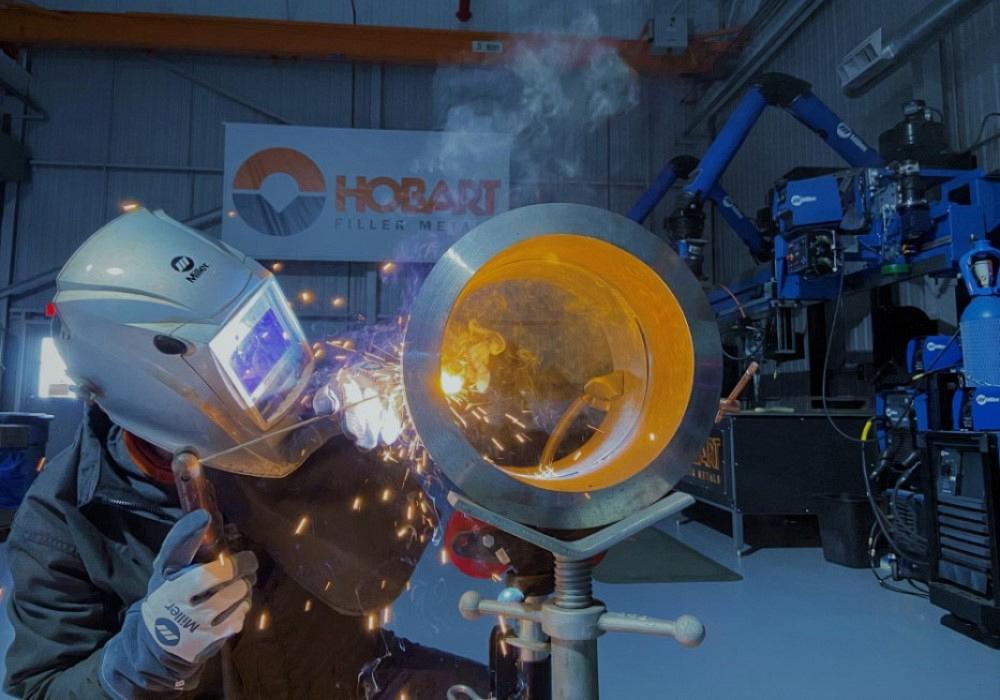Preventing Weld Undercut: Proven Approaches Every Welder Should Know
Preventing Weld Undercut: Proven Approaches Every Welder Should Know
Blog Article
Comprehending the Causes and Solutions for Undercut Welding in Steel Manufacture Processes
In the realm of steel fabrication procedures, the event of undercut welding postures a considerable obstacle that requires an extensive understanding of its reasons and practical remedies. The intricate interaction of different variables throughout welding procedures can bring about this undesirable sensation, influencing the architectural honesty and overall quality of the bonded joints - Preventing weld undercut. By studying the origin creates of undercut welding and discovering reliable therapeutic actions, makers can raise the requirement of their craftsmanship and guarantee the manufacturing of remarkable steel elements
Common Root Causes Of Undercut Welding
Frequently neglected in metal manufacture, undercut welding occurs due to various aspects that require thorough focus and knowledge to be successfully minimized. Additionally, improper welding methods, such as utilizing the incorrect welding angle or take a trip rate, can likewise add to damage development. The selection of welding criteria, such as voltage, existing, and wire feed speed, plays a significant role in the occurrence of undercut welding.
Impact of Incorrect Welding Parameters
Inaccurate welding specifications can significantly compromise the integrity and top quality of bonded joints in steel construction processes. The impact of wrong welding criteria shows up in different ways, leading to architectural weak points and flaws in the welded components. One critical facet impacted by incorrect welding parameters is the infiltration deepness of the weld. Insufficient heat input as a result of low welding currents or excessively high traveling speeds can result in poor combination between the base steels, causing incomplete joint penetration and weakened bonds. Alternatively, excessive warm input brought on by high welding currents or slow-moving travel speeds can cause burn-through and extreme reinforcement, creating a breakable and unstable weld framework. Additionally, inaccurate parameters such as inappropriate voltage settings or inaccurate electrode angles can add to unpredictable weld grain profiles, absence of fusion, and boosted chances of flaws like damaging. Precise interest to welding criteria is critical to make sure the manufacturing of top quality welds with the preferred mechanical properties and structural integrity.
Result of Improper Lantern Angle
Incorrect torch angle in welding operations can significantly impact the quality and honesty of the last weld joints in steel construction processes. The torch angle plays an important function in establishing the warm input and distribution during welding. When the torch angle is wrong, concerns such as damaging can develop. Undercutting is a common welding defect where a groove creates along the weld toe, deteriorating the joint and compromising its architectural stability.
A torch angle that is as well steep can cause not enough infiltration, incomplete combination, and enhanced spatter. On the other hand, a lantern angle that is also superficial can result in extreme infiltration, burn-through, and distortion of the base material. Preventing more helpful hints weld undercut. Appropriate lantern angle is necessary for making sure constant weld quality, stamina, and look
To avoid undercutting and other issues triggered by incorrect torch angles, welders have to be educated to keep the appropriate lantern angle throughout the welding process. Routine monitoring and adjustment of torch angles throughout welding can aid accomplish sound welds with minimal issues.
Function of Inadequate Welding Strategies

Another element of insufficient welding techniques is improper weld prep work. Poor cleansing of the base metals, wrong joint design, or insufficient side preparation can all add to undercut welding. Poor protecting gas protection or making use of the wrong kind of gas can result in insufficient blend and the development of undercut flaws.
To attend to the role of poor welding methods in metal manufacture processes, it is necessary to offer extensive training for welders. Appropriate education on welding specifications, joint prep work, and securing gas selection can help stop undercut welding and guarantee high-quality welds in metal fabrication jobs.
Reliable Solutions for Undercut Welding
Resolving undercut welding in metal manufacture requires executing efficient options to enhance weld high quality and structural integrity. Among the main options to battle undercut is to readjust welding specifications such as voltage, present, and take a trip rate to make certain appropriate heat input and blend. By fine-tuning these setups, welders can stop too this post much melting of the base steel and filler product, minimizing the possibility of undercut development.
Additionally, correct joint preparation is essential in preventing undercut. Guaranteeing tidy base metal surfaces totally free of contaminants and making use of the appropriate bevel angle can aid advertise much better weld infiltration and decrease the danger of undercut - Preventing weld undercut. Using ideal welding strategies, such as weaving or oscillating the lantern, can additionally aid in dispersing heat equally and filling the weld joint adequately, decreasing the possibility of undercut issues
Moreover, selecting the proper welding consumables, including electrodes and filler metals, is vital in reducing undercut. Utilizing materials with appropriate chemical structures and mechanical homes can add to attaining sound welds with marginal undercut. Regular inspection and quality control actions should also be implemented to spot and deal with undercut problems immediately, making sure the overall honesty of made metal elements.

Final Thought
Finally, understanding the causes and remedies for undercut welding in metal manufacture procedures is essential for attaining premium welds. By resolving typical reasons such as wrong welding criteria, inappropriate torch angle, and inadequate welding strategies, welders can avoid damaging and make sure solid, resilient welds. It is important to pay focus to these elements and apply efficient remedies to boost the total welding procedure and end product quality.

Report this page